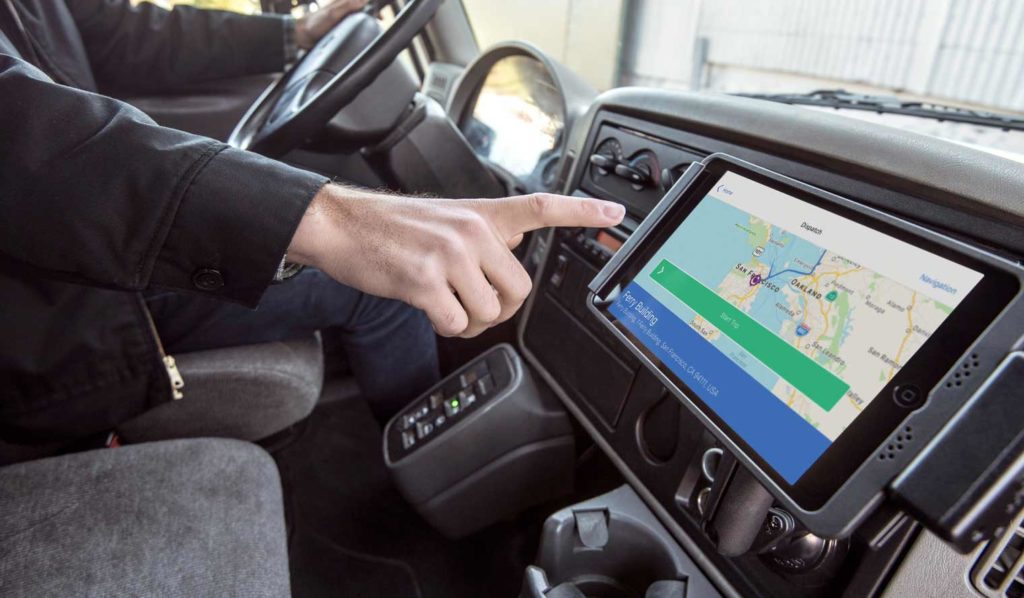
How to Use GPS to Run a Fleet?
A GPS device is usually connected to the OBD/OBD II or JBUS port, depending on the type of vehicle. It is a vital tool required to enable smooth operations in a business that has a fleet. GPS tracking for fleet vehicles, in addition to its primary function of fleet tracking, offers additional valuable information like engine diagnostics, mileage, and instances of overspeeding and rash driving, similar to a GPS tracker for cars.
Using this device with a combination of other telematic tools helps to manage a fleet effectively, making it more productive. In the case of businesses such as local taxis, concierge and airport shuttles, a GPS tracker is used for hassle free fleet tracking. This helps the fleet manager monitor and manage the fleet, remotely.
The device sends and receives signals that help determine the vehicle’s location. Fleet managers and drivers rely heavily on telematics for safety and navigation. Additionally, this can also be used to automate several processes making them more accurate and efficient. Time cards and driver logs can all be recorded digitally in the form of E-logs.
E-logs can be used to generate various reports, such as IFTA reports, fuel reports, etc. They can be used to automate billing and payroll, making the entire process fast and paperless. Recently, the Federal Motor Carrier Safety Administration (FMCSA) made it mandatory for businesses to install GPS devices and drivers to maintain E-logs.
Telematics and Its Importance
As businesses grow, they need to adapt to the change in paradigm and evolve accordingly. Telematics is an efficient tool, when used right it can significantly make an impact on the bottom-line of the business. It helps the fleet manager monitor and track the vehicles, at ease and also dispatch them.
This is very useful to businesses as it is transparent and has no room for error. The information relayed by the device is accurate and is stored digitally, that way it can be reviewed any time it’s required to do so. Businesses that use telematics to manage their fleet have more success in retaining their drivers.This is very important for a business, as the drivers are its cornerstone.
Using a combination of telematic tools helps get the most out of your fleet, in terms of performance. Businesses that use telematics have reported a significant increase in productivity as well as with driver retention. This saves the company a lot of money as hiring drivers isn’t an easy task.
Telematic Tools
There are several tools and solutions developed to assist businesses that have a fleet. Since telematics is used by industries across various verticals, each tool and solution is tailored to suit their needs. Fleet managers find it easier to monitor their entire fleet on one screen. Using telematics also promotes road safety and helps reduce fuel cost.

Using a GPS tracker for cars has multiple benefits, especially with businesses that have a large fleet. The majority of businesses that require to track their cars would be taxis, limo services and concierges. This tracker has its own internal power source that is set to send out pings at a set interval, when the vehicle is off. The signal is transmitted more frequently when the vehicle is in motion.
Not only does it show the vehicle’s location but it gives an accurate reading on the amount of fuel used and distance travelled. It also shows instances of idling, over speeding and hard braking. This information is very useful to drivers and fleet managers as it helps them to work on areas of opportunity.
By having such a system in place, which can rank drivers based on their adherence to safety protocol, performance and behaviour, the fleet manager can then reward the best drivers and provide appropriate feedback and training to those who need it. This has been proven to show positive results in fleet and driver performance.
GPS Tracking Device (OBD/JBUS)
This is the primary telematic tool which is connected to the onboard processor of the vehicle and constantly transmits signals of its location and other data such as the vehicles diagnostics, instances of rash driving, etc. The GPS tracker used in cars can be integrated with other telematic solutions, enabling efficient fleet management.
Dashboard Cameras
These are video cameras that are attached to the vehicle to monitor the driver as well as the road. This is a very useful tool that promotes safety and ensures the driver adheres to protocol.
These cameras also provide evidence in case of accidents or theft. The video evidence is also used to claim insurance.
E-Logs
These are logs of events recorded by the GPS device from the time of ignition. This data can be compiled into different reports depending on the kind of information required. It also reduces paperwork and is very convenient for drivers, especially when they are filling in timesheets and other trip related reports.
Asset/Trailer Tracking Device
This is very similar to the GPS device used in vehicles. The most distinguishable feature is that it is mounted onto the asset or trailer and not connected to the onboard processor of the vehicle. GPS asset tracking solutions can be used for fleet tracking and management, high-value equipment, trailers and dollies, rental equipment, etc.
Dispatching Software
It is a software that lets you track the fleet remotely. It is an extremely vital tool used by to assign tasks to drivers and also shows their progress. This screen can also be shared with the customer so that they are well informed of the ETA (Estimated Time of Arrival).